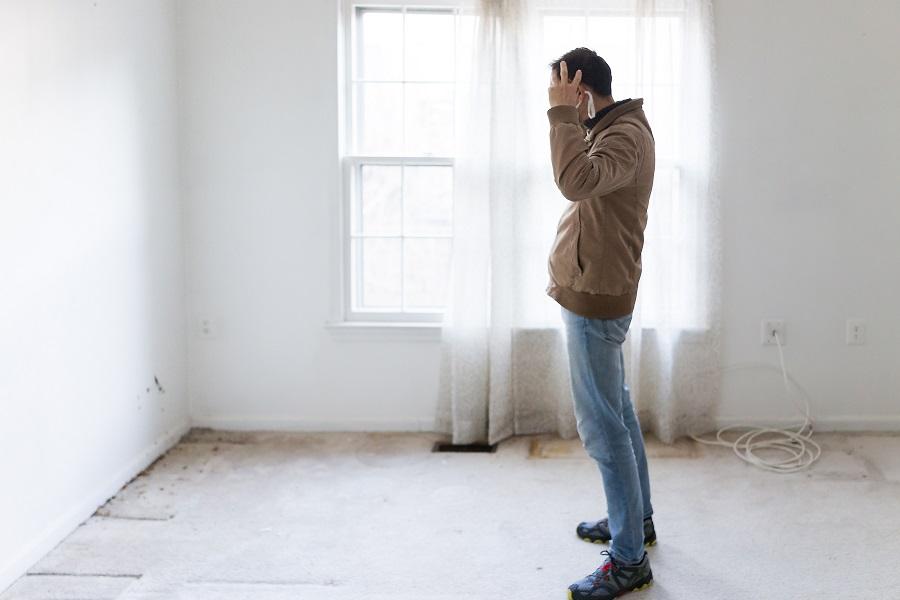As we know in Texas, burst pipes can cause our carpeting to stand in water, potentially for a bit of time until we can get the water shut off and a plumber called for repairs.
Smaller things can also cause carpet mold – like overwatering plants, a persistent leak, and even an untrained puppy. This mold can occur in a matter of days.

Molds are part of our natural environment. Outdoors, molds play a part in nature by breaking down dead organic matter, such as fallen leaves and dead trees. Molds reproduce by means of tiny spores; the spores are invisible to the naked eye and float through outdoor and indoor air. Molds are usually not a problem indoors, unless mold spores land on a wet or damp spot and begin growing.
There are many types of mold, and none of them will grow without water or moisture.
Molds produce allergens, which are substances that can cause allergic reactions, as well as irritants and, in some cases, potentially toxic substances known as mycotoxins. Inhaling or touching mold or mold spores may cause allergic reactions in sensitive individuals. Allergic responses include hay fever-type symptoms, such as sneezing, runny nose, red eyes, and skin rash (dermatitis).
Allergic reactions to mold are common. They can be immediate or delayed.
While you may be able to take care of smaller spots of mold yourself, sections greater than 5 feet in width require treatment by professionals. In larger areas, it’s more likely that the mold has invaded the underlay or flooring, which is much harder to remove. The most critical thing is to act fast … since mold is a living, breathing organism, spores spread rapidly.
Just because mold is not immediately apparent or visible on a carpet’s surface does not mean that mold growth is not in progress. In fact, mold will probably only be visible on the surface of carpets in unusually severe cases of growth.
Any discoloration or odor that may be described as mildew on a carpet is likely mold. There are a wide variety of things that can cause odor or discoloration on carpet, so if you have any concerns, a sample can be sent to a lab for testing.
Any carpet that has had standing water or flood damage likely has mold. If the carpet is completely removed, cleaned and dried within 24 to 48 hours it may be salvageable; but even then, removal and cleaning are not guaranteed to prevent mold growth.
Wet padding is another indication. If the padding has become moist from condensation or wet from the water, both the padding and the carpet are at risk for mold.
Small areas of mold on carpeting that have been quickly identified can sometimes be cleaned and dried. Steam cleaning with detergent may work as long as the spot is dried quickly and thoroughly. Stronger cleaning agents may be used if detergent doesn’t work.
In some cases, you may be able to replace just the one section of affected carpet, if you are able to seamlessly match the existing carpet or if it is in an area that you are not worried about aesthetics.
To clean your carpet, follow these steps:
- Ventilate the area by opening windows.
- Wear a facemask, eye protection, and rubber gloves before you get to work.
- If its is possible to lift the carpet, do so until you reach the the area with mold and examine the backing. Backing with more than a few feet of visible mold likely needs to be replaced.
- If you cannot remove or lift the carpet, proceed by treating the visible surface mold.
- Scrub the surface of the carpet with a dry, stiff bristle brush to remove visible mold, into a dustpan and discard it in a trash bag. Do not vacuum, as mold spores in a vacuum can spread to other parts of your home.
- Thoroughly saturate the moldy area, and at least 6 inches around it, with anti-fungal spray that specifies it’s safe for carpets and let it sit for an hour.
- Blot the anti-fungal spray with a dry, clean, disposable rag to soak up excess. Do not rinse the area with water or any other treatment. The anti-fungal agent will continue to work until it has fully dried.
- Close the windows, turn the heat up in the room, and use a dehumidifier to let the carpet dry naturally for at least 24 hours and don’t walk on it during that time.
- Once the carpet has dried thoroughly, re-apply the anti-fungal treatment as noted, and use a clean, fresh, disposable rag to blot. Discard the rag after blotting.
- Continue checking the spot every day or so for a few weeks to ensure that mold growth hasn’t returned.
If you choose to hire a contractor (or other professional service provider) to do the cleanup, make sure the contractor has experience cleaning up mold. If you have health concerns, consult a health professional before starting cleanup – even if you decide to replace your carpet, health concerns may require you to not be present until the old carpeting has been removed, the area professionally cleaned, and the new carpet installed.
For commercial property inspections in the Dallas/Fort Worth area, including a thorough and informative home inspection report, learn more at
or request a quote for a commercial inspection at
682-351-2267


